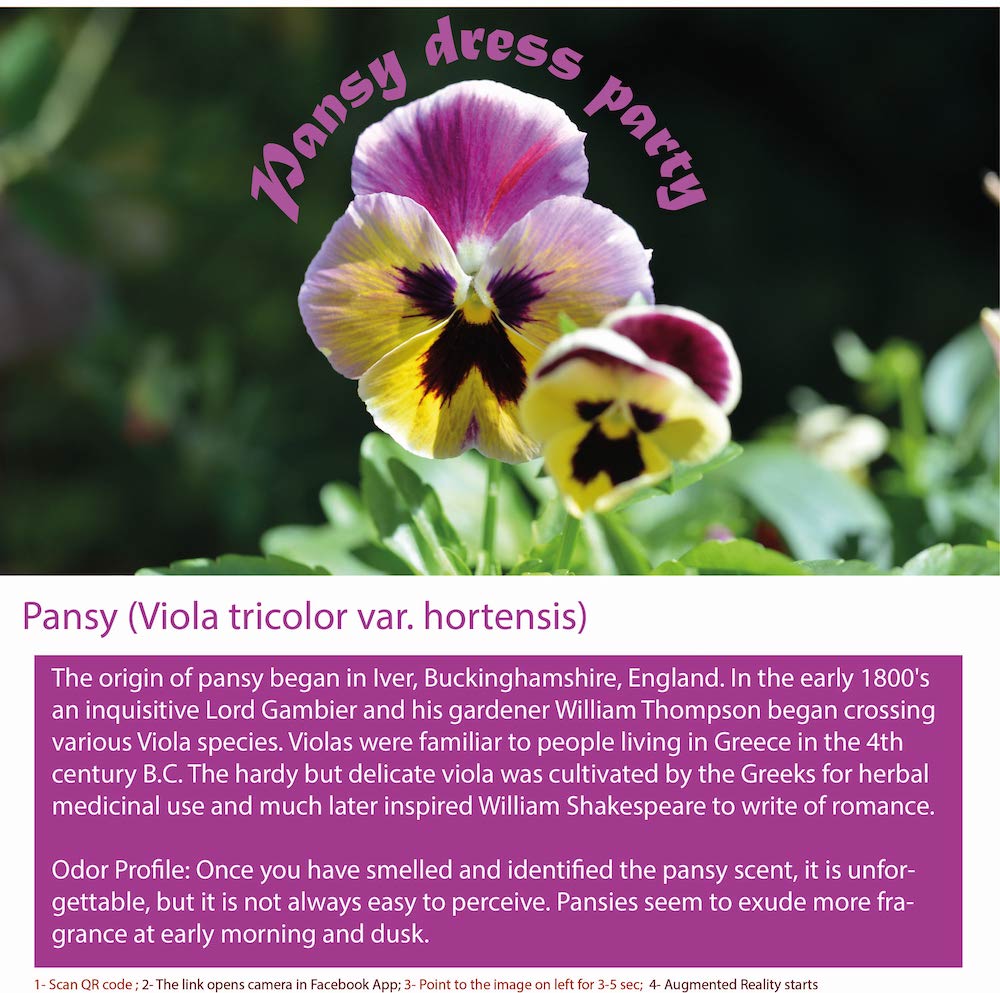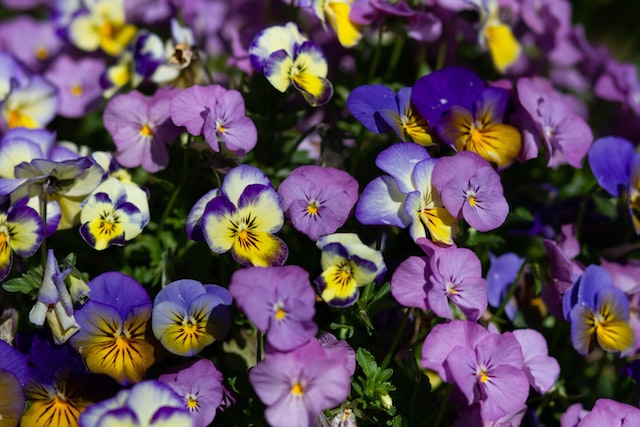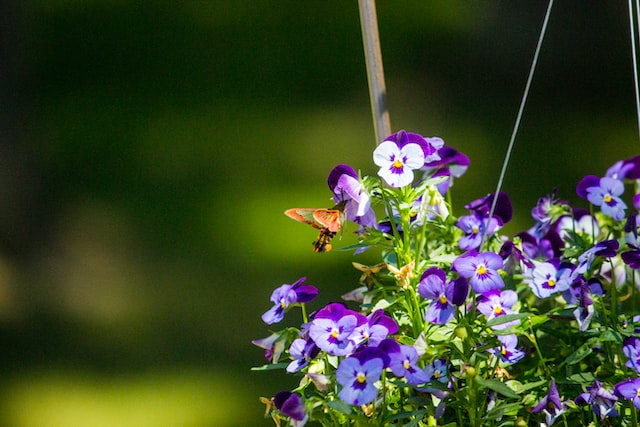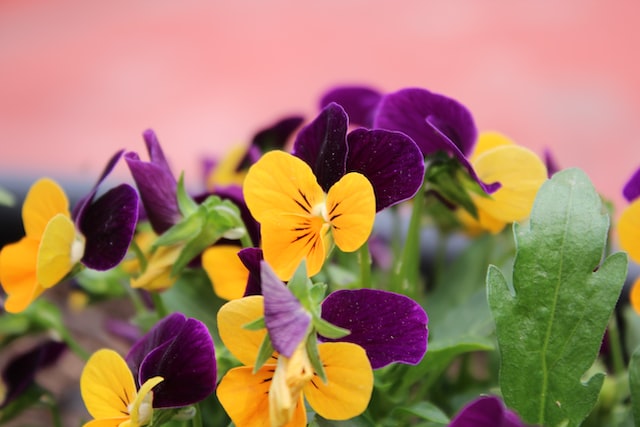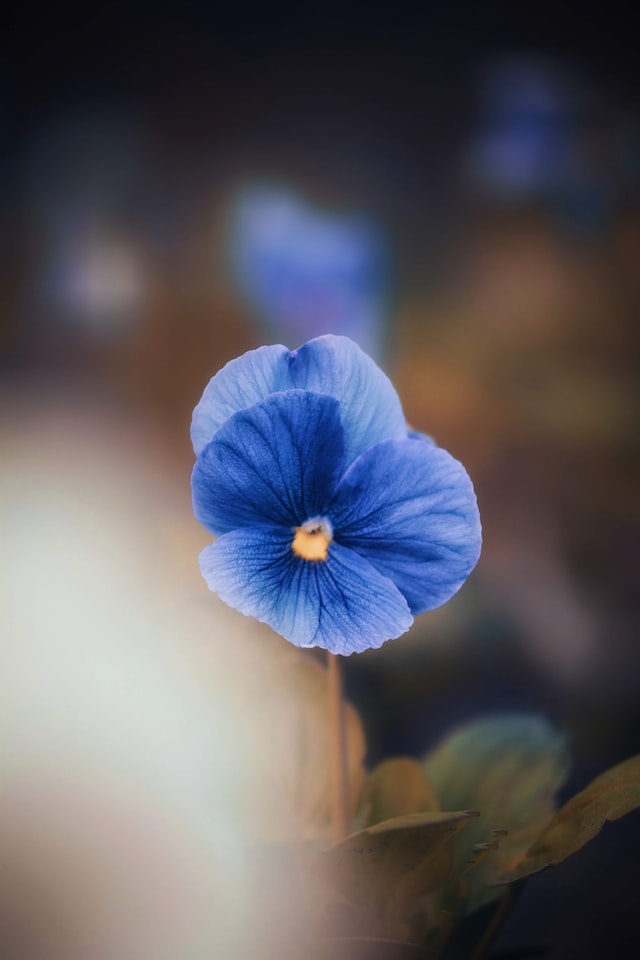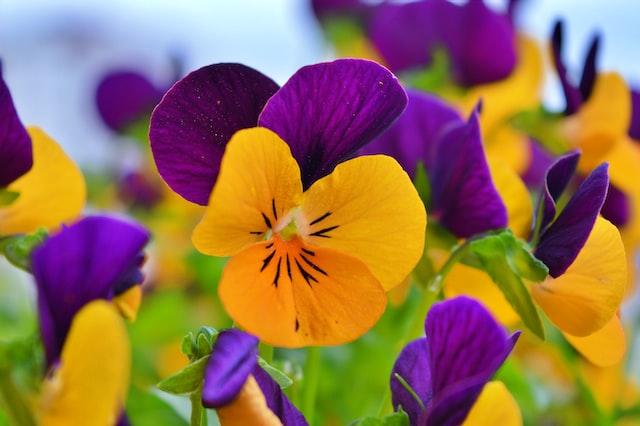Capturing the Essence of Spring: Pansy Fragrance
Pansy: The Charming and Colorful Floral Wonder
Introduction: Pansies, with their charming and colorful petals, are delightful flowers that have been cherished and admired by people around the world. Scientifically known as Viola tricolor, these vibrant blooms are part of the Violaceae family and are celebrated for their cheerful appearance and versatility. Pansies have found their way into various aspects of human life, from inspiring perfumers with their delicate fragrance to offering potential therapeutic properties in essential oils and traditional medicine. This essay explores the captivating world of pansies, encompassing their presence in perfumes, therapeutic oils, food, medicinal systems, historical significance, and intriguing fun facts about these charming and enchanting flowers.
The Enchantment of Pansies: Pansies are herbaceous annual or perennial flowers that come in a wide range of colors and combinations, such as purple, yellow, white, and blue. They are beloved for their "faces," which are created by the distinctive patterns on their petals. Pansies are often associated with happiness and love, and they are frequently used in gardens, floral arrangements, and as decorative elements in various cultures.
Perfumes and Fragrance: Pansies are not commonly used in perfumery to extract essential oils. However, their delicate fragrance and floral notes have inspired perfumers to create synthetic compounds that mimic their charming scent. Pansy-inspired fragrances are often fresh, light, and evocative of a spring garden, adding a touch of innocence and whimsy to perfumes.
Therapeutic Oils and Aromatherapy: While pansy essential oil is not a widely available product, certain therapeutic oils with similar floral characteristics, such as violet leaf essential oil, are used in aromatherapy. These oils may have potential calming and soothing effects on the mind, promoting relaxation and emotional well-being.
Culinary Delights: Pansies are edible flowers and can be used as decorative elements in culinary creations. Their bright colors and delicate appearance make them ideal for garnishing salads, desserts, and beverages, adding a touch of beauty and elegance to the dishes.
Medicinal and Traditional Uses: In traditional medicine systems, pansies have been used for their potential medicinal properties. Pansy flowers and leaves have been used in remedies for various ailments, including respiratory issues, skin conditions, and inflammation. Some traditional herbalists value pansies for their potential diuretic and expectorant properties.
Historical Significance: Pansies have a long history of cultivation and appreciation. The flower's name is believed to have originated from the French word "pensée," which means thought or remembrance. Pansies were a symbol of remembrance during the Victorian era, and they were often used in love tokens and bouquets to convey affection and fondness.
Fun and Crazy Facts:
Introduction: Pansies, with their charming and colorful petals, are delightful flowers that have been cherished and admired by people around the world. Scientifically known as Viola tricolor, these vibrant blooms are part of the Violaceae family and are celebrated for their cheerful appearance and versatility. Pansies have found their way into various aspects of human life, from inspiring perfumers with their delicate fragrance to offering potential therapeutic properties in essential oils and traditional medicine. This essay explores the captivating world of pansies, encompassing their presence in perfumes, therapeutic oils, food, medicinal systems, historical significance, and intriguing fun facts about these charming and enchanting flowers.
The Enchantment of Pansies: Pansies are herbaceous annual or perennial flowers that come in a wide range of colors and combinations, such as purple, yellow, white, and blue. They are beloved for their "faces," which are created by the distinctive patterns on their petals. Pansies are often associated with happiness and love, and they are frequently used in gardens, floral arrangements, and as decorative elements in various cultures.
Perfumes and Fragrance: Pansies are not commonly used in perfumery to extract essential oils. However, their delicate fragrance and floral notes have inspired perfumers to create synthetic compounds that mimic their charming scent. Pansy-inspired fragrances are often fresh, light, and evocative of a spring garden, adding a touch of innocence and whimsy to perfumes.
Therapeutic Oils and Aromatherapy: While pansy essential oil is not a widely available product, certain therapeutic oils with similar floral characteristics, such as violet leaf essential oil, are used in aromatherapy. These oils may have potential calming and soothing effects on the mind, promoting relaxation and emotional well-being.
Culinary Delights: Pansies are edible flowers and can be used as decorative elements in culinary creations. Their bright colors and delicate appearance make them ideal for garnishing salads, desserts, and beverages, adding a touch of beauty and elegance to the dishes.
Medicinal and Traditional Uses: In traditional medicine systems, pansies have been used for their potential medicinal properties. Pansy flowers and leaves have been used in remedies for various ailments, including respiratory issues, skin conditions, and inflammation. Some traditional herbalists value pansies for their potential diuretic and expectorant properties.
Historical Significance: Pansies have a long history of cultivation and appreciation. The flower's name is believed to have originated from the French word "pensée," which means thought or remembrance. Pansies were a symbol of remembrance during the Victorian era, and they were often used in love tokens and bouquets to convey affection and fondness.
Fun and Crazy Facts:
- Heart-Shaped Leaves: Pansy leaves are heart-shaped, adding to the flower's charm and symbolism of love.
- Cool Weather Tolerance: Pansies are known for their resilience in cool weather, making them popular choices for early spring and fall gardens.
- Delightful Faces: Pansies are often referred to as "violas" or "viola tricolor," emphasizing their bright and colorful "faces."
- Easter Flower: Pansies are sometimes associated with Easter celebrations due to their availability in spring and their cheerful appearance.
- Color Meanings: In the language of flowers, different pansy colors carry various meanings, with purple symbolizing remembrance, yellow representing happiness, and white symbolizing innocence.
To experience augmented reality, please open the Facebook-app using QR code and point to the image below
Experience the Delicate Aromas of Pansy Perfume
Pansy is a type of flowering plant that belongs to the Viola genus. Pansies are known for their brightly colored, often multi-colored, flowers that come in shades of purple, blue, yellow, red, and white. They are also known for their distinctive "face" markings on their flowers, which give the impression of a smiling face. Pansies are typically small to medium-sized plants that grow to a height of 4-8 inches and have hairy leaves. They are native to Europe and Asia, and are widely cultivated for their ornamental value.
Pansies are popular garden plants and are often used in flower beds, borders, and rock gardens. They are also used in hanging baskets and as edging plants. Pansies are hardy and can tolerate cold temperatures, making them a good choice for planting in early spring or late fall. They are also relatively easy to care for and prefer cool temperatures and moist, well-drained soil. Pansies are also popular in floral arrangements, adding a pop of color and charm.
Pansies are not edible and not used in culinary.
Pansies are popular garden plants and are often used in flower beds, borders, and rock gardens. They are also used in hanging baskets and as edging plants. Pansies are hardy and can tolerate cold temperatures, making them a good choice for planting in early spring or late fall. They are also relatively easy to care for and prefer cool temperatures and moist, well-drained soil. Pansies are also popular in floral arrangements, adding a pop of color and charm.
Pansies are not edible and not used in culinary.
Unveiling the Allure of Soft Floral Scents
Pansies have a long cultivation history, with the first recorded cultivation of pansies dating back to the 16th century in Europe. The wild ancestor of the pansy is believed to be the Viola tricolor, a small wildflower that grows in Europe and Asia.
The modern pansy as we know it today is the result of centuries of selective breeding by European horticulturists. In the early 18th century, the first hybrids between different wild species of viola were created, and by the 19th century, these hybrids were being selectively bred to produce the larger and more brightly colored flowers that are associated with modern pansies.
During the Victorian era, pansies became extremely popular as garden plants and were widely cultivated by amateur and professional gardeners. They were also popular as cut flowers and were often used in floral arrangements.
In the 20th century, pansy breeding continued and new cultivars were developed with a wider range of colors, larger flowers, and improved disease resistance. Today, pansies are widely cultivated around the world, and are enjoyed by gardeners and flower lovers alike for their bright colors and charming "faces."
It is worth noting that cultivation of pansies is not limited to Europe and North America, many other countries have their own pansy cultivation history and are producing new varieties.
The modern pansy as we know it today is the result of centuries of selective breeding by European horticulturists. In the early 18th century, the first hybrids between different wild species of viola were created, and by the 19th century, these hybrids were being selectively bred to produce the larger and more brightly colored flowers that are associated with modern pansies.
During the Victorian era, pansies became extremely popular as garden plants and were widely cultivated by amateur and professional gardeners. They were also popular as cut flowers and were often used in floral arrangements.
In the 20th century, pansy breeding continued and new cultivars were developed with a wider range of colors, larger flowers, and improved disease resistance. Today, pansies are widely cultivated around the world, and are enjoyed by gardeners and flower lovers alike for their bright colors and charming "faces."
It is worth noting that cultivation of pansies is not limited to Europe and North America, many other countries have their own pansy cultivation history and are producing new varieties.
Pansy fun fact:
- Pansies are members of the Viola genus, which also includes violets and Johnny-jump-ups.
- Pansies are biennial plants, meaning they grow leaves in the first year and then produce flowers and seeds in the second year before dying.
- The name "pansy" comes from the French word "pensée," which means "thought." This is likely due to the plant's association with love and remembrance in literature and folklore.
- Pansies have been used as symbols of love, remembrance, and friendship for centuries. They have also been used as a symbol of freemasonry, and as a symbol of the pansy movement in the early 20th century, which advocated for equal rights for LGBT people.
- Pansies are edible, but not commonly used in cooking, they can be cand or used as a garnish.
- Pansies are very hardy and can tolerate cold temperatures, making them a good choice for planting in early spring or late fall.
- Pansies are known to attract bees, butterflies and other beneficial insects to the garden.
- Pansies are also believed to have medicinal properties and have been used in traditional medicine for various ailments such as skin conditions and respiratory issues.
- Pansies have been used in perfumery as well, their scent is described as light, fresh and floral.
Discover Scentopia Singapore's Pansy Scent
Pansy is a floral scent note often used in perfumery. It is known for its fresh, sweet, and green aroma, with a slight hint of spice. It is often described as having a delicate and natural smell, reminiscent of a meadow in spring. Pansy is often used as a top or middle note in perfumes, and pairs well with other floral notes such as roses, lilies, and violets.
Crafting the Perfect Spring-Inspired Aroma
Pansy is a floral scent note often used in perfumery. It is known for its fresh, sweet, and green aroma, with a slight hint of spice. It is often described as having a delicate and natural smell, reminiscent of a meadow in spring. Pansy is often used as a top or middle note in perfumes, and pairs well with other floral notes such as roses, lilies, and violets.
The Art of Perfume-Making at Scentopia Singapore
Some perfumes that may contain a hint of pansy include "Chanel No. 5," "Gucci Bloom," and "Dior J'adore." However, it's worth noting that perfume compositions are often kept secret, so it's difficult to know for certain which perfumes contain which notes without confirmation from the brands themselves.
Pansies are known for their vibrant and colorful petals, but they also possess a delicate and somewhat sweet scent. This scent can vary slightly depending on the specific variety of pansy, but in general, it's a light and pleasant floral fragrance that adds to the overall appeal of the flower. Pansies are often used in gardens, floral arrangements, and landscaping due to their attractive appearance and subtle scent.
Pansies are known for their vibrant and colorful petals, but they also possess a delicate and somewhat sweet scent. This scent can vary slightly depending on the specific variety of pansy, but in general, it's a light and pleasant floral fragrance that adds to the overall appeal of the flower. Pansies are often used in gardens, floral arrangements, and landscaping due to their attractive appearance and subtle scent.
Join Scentopia, Sentosa's latest tourist attraction wonderful orchid scent crafting, fragrance tour, bridal shower or corporate team building which includes perfume making onsite and offsite, beach activities and more. We also serve primary school learning journey, secondary students and pupil on industrial excursions. Know more about our orchids perfume bar or therapeutic orchid scents and other wellness aromas. Conatct Perfume workshop or book a scent crafting session here.

